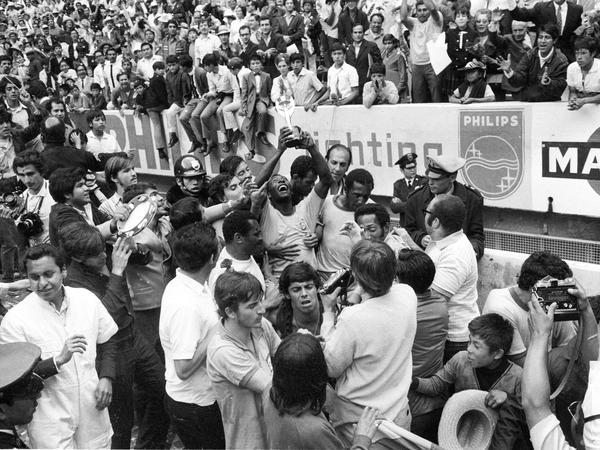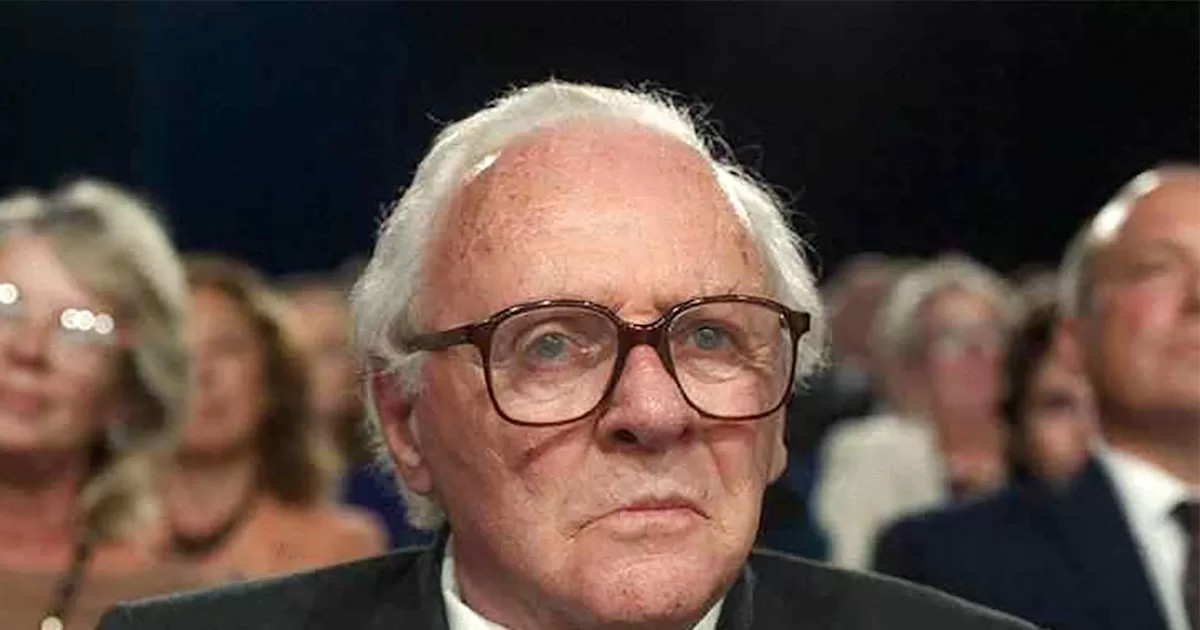Pelé cried bitterly. The skies over New Jersey opened its floodgates for tears. Even the football stars, including Franz Beckenbauer, had tears in their eyes as they hoisted the deified onto their shoulders and carried them through the Giant Stadium in front of 75,646 moved spectators. In the changing room, Pelé needed medical comfort, he was so upset about saying goodbye. “I died a bit today,” he sobbed in his deep voice. He was 36 years old then.
Pelé played one half each for the two clubs in his career, for his hometown club FC Santos (1956-1974) and his Croesus club Cosmos (1975-1977): he scored his 1281st goal to say goodbye and bequeathed his legendary jersey with the number ten to that man , named Waldemar de Brito, who discovered him when he was eleven in the poor town of Tres Coracoes in Brazil.
But it shouldn’t have been the very last hurrah. When Beckenbauer said “bye, bye” to Cosmos, New York and America three years later, on September 24, 1980, Pelé drew in his honor as “Special Guest Player” for “Franz Beckenbauer’s Farewell Game” against a selection from National Soccer League again the jersey with the 10. Pelé scored his 1282nd goal in front of 71,413 visitors and finally gave up his last shirt.

To thunderous applause from the audience, Pelé hung the jersey with the ten Franz Beckenbauer around his neck when he left after 42 minutes. “He’s the most wonderful athlete I’ve ever met,” said Beckenbauer. The appreciation was mutual. Pelé said of Beckenbauer: “Franz is the most brilliant player in the world.”
Pelé and Beckenbauer played together at Cosmos for a season. Against each other in an official game but only once: In the 2-2 international match on December 14, 1968 in Rio de Janeiro. Pele didn’t score.
Pelé delighted the world
“It’s much easier to start a career than to end it,” Pelé complained in his New Yorker Farewell. Which starts the flashback to 1958 and the World Cup in Sweden. Pelé scored a 1-0 win against Wales in the quarter-finals, scored a hat-trick in a 5-2 win over France in the semi-finals and scored twice in a 5-2 win over Sweden in the final in Stockholm. Six goals, one more beautiful, artful, acrobatic, more tricky, more powerful than the other.
“It’s a lot easier to start a career than to finish it.”
Pele
When Captain Bellini accepted the golden FIFA trophy from the Swedish king and Brazil had become world champions for the first time with dream football and a boy wonder at the sixth attempt, the teenager cried uncontrollably with happiness. When defending his title in Chile in 1962, Pelé was knocked out of action by a torn muscle in the first round. In the 1970 final in Mexico, he scored a goal in a 4-1 victory against Italy and became world champion for the third time.

There is a historic date between his professional debut at FC Santos at the age of 15 and the end of his career at the age of 36 in New York: November 19, 1969, when Pelé scored his 1000th goal. When the later “world footballer and sportsman of the 20th century” came close to the magic mark, everything was arranged so that this event did not take place somewhere in the province, but as a gigantic show in the Maracana of Rio de Janeiro. 100,000 spectators wanted to witness the historic goal in the FC Santos game against Vasco da Gama.
The 78th minute: Pelé was brought down in the penalty area. A foul. Referee de Lima pointed to the penalty spot. “Pele, Pele, Pele” roared hundreds of thousands. Pele trotted up. It became dead quiet in the stadium. The loud radio reporters only whispered. Pelé ran and shot. Goalkeeper Andrade fell into the wrong corner and the ball flew into the net. Thousands of bells were ringing in Brazil this minute. A scream from a million throats: “Goooooooal”
Lighting of the Olympic Flame
In his annual review of 1969, the year Apollo 12 landed on the moon, the author and writer Hans Blickensdorfer summed up the Pelé fairy tale: “November 19 was the day when football hit the moon for 90 million Brazilians covert.”
In 2016, perhaps the greatest and most poignant performance without a ball awaited the always friendly Pelé, whose record includes two failed marriages and seven children: the lighting of the Olympic flame in Rio de Janeiro. However, the 75-year-old canceled his participation in the opening ceremony after two operations on his hip and spine.
Unlike Ali, severely affected by Parkinson’s disease, who, trembling, lit the Olympic flame in Atlanta in 1996 and briefly “carried” the Olympic flag in London in 2012, although he could no longer walk on his own, Pelé didn’t want to be on crutches in the world present.
To home page

